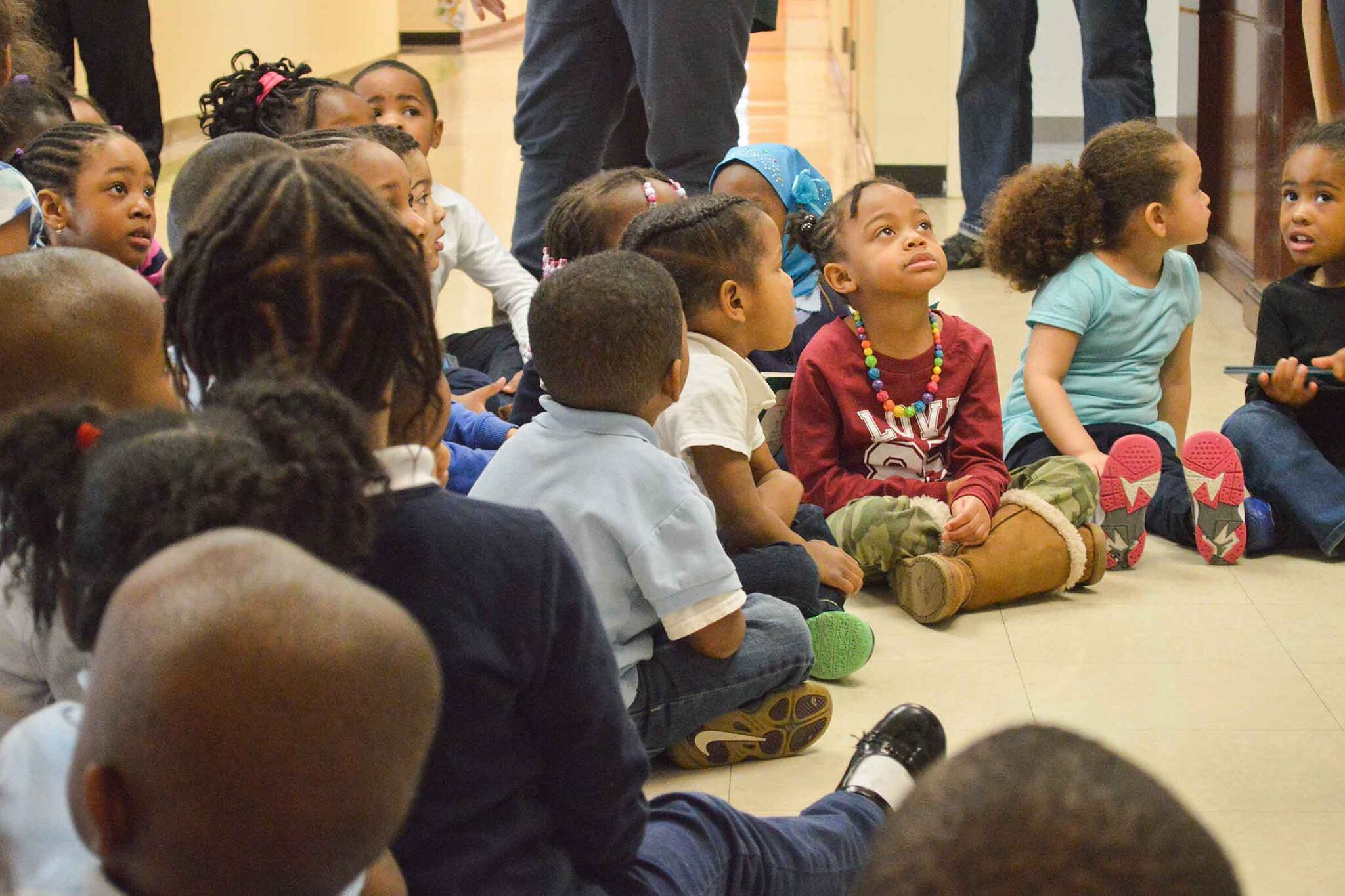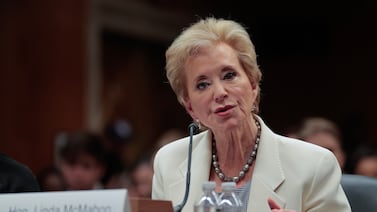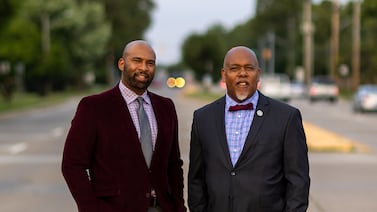Hundreds of thousands of Black and Latino students in New Jersey attend schools where they are racially isolated and surrounded by poverty, despite strong state laws forbidding school segregation. One of the nation’s most segregated states, New Jersey has allowed the problem to fester for decades — now, it must fix it.
That was the argument made in court Thursday by plaintiffs who filed a historic lawsuit nearly four years ago arguing that schools across the entire state are unlawfully segregated — the first lawsuit in New Jersey, and one of few nationally, to attack the issue in such sweeping fashion. If the challenge is successful, it could lead to fundamental changes to New Jersey’s school system and large-scale desegregation efforts not seen in the U.S. for decades.
“I truly feel the burden of history,” said Lawrence Lustberg, attorney for the plaintiffs, at the start of oral arguments. It is time, he later said, “when we in New Jersey finally begin to acknowledge a problem that we have seen so clearly for decades, but really have done so little about.”
The administration of Gov. Phil Murphy, a liberal Democrat, has vigorously defended the state in court after early settlement talks broke down. The state’s lawyer argued Thursday that the plaintiffs had failed to prove segregation is a statewide problem and, in a line of defense that has appalled some advocates, added that students can receive a quality education even in segregated schools.
The question at hand Thursday was whether the state is liable for the racial and socioeconomic segregation found in many New Jersey schools. After three hours of arguments, Superior Court Judge Robert Lougy declined to rule from the bench, saying the weighty issues merit further consideration and he would issue a ruling “in due course.”
Whatever the judge decides, appeals are likely to follow. But if the plaintiffs prevail, then the state will be forced to begin exploring ways to desegregate schools. The remedies, which advocates say will vary depending on local conditions, could include redrawing district boundaries and allowing students to attend schools in neighboring communities — changes sure to provoke strong resistance from some parents and taxpayers.
“This is a very difficult political issue,” Lustberg said Thursday, arguing that is why the court must compel the state to act. “We need that court order to bring all the players together in order to reach a resolution.”
New Jersey has the sixth most segregated schools nationally in terms of Black students’ exposure to white students, and the seventh most segregated for Latino students, according to an analysis of 2016-17 data.
More than 377,000 Black and Latino students, or nearly two-thirds of that population, attend schools where more than 75% of their peers are other students of color, according to data from 2015-20 cited in the lawsuit. Some 244,000 white students, or about two-fifths of that population, go to schools where 75% or more of their classmates are also white.
Those statistics helped inspire nine students, their families, and a coalition of religious and civil rights groups to sue the state in 2018. They filed their complaint on the 64th anniversary of the U.S. Supreme Court’s Brown v. Board of Education ruling, which said racially segregated schools are inherently unequal.
The suit claims that many New Jersey students are denied the social and academic benefits of diversity due to a state law requiring students to attend schools in the communities where they live, which often are deeply segregated by race and class. This situation violates the state constitution, which is unique in its explicit bans on school segregation, and prior court rulings that held the state responsible for addressing segregation regardless of what caused it, the suit says.
Advocates who helped coordinate the legal effort concluded that New Jersey’s courts would be more likely to order schools to desegregate than would lawmakers or the governor.
“To fully engage in this space would probably be a political nightmare for a candidate,” said Rev. Charles Boyer, founding director of the advocacy group Salvation and Social Justice, during an interview on NJTV during last year’s governor’s race. “There is still a lot of disdain for Black people in white communities, whether that be housing or schools.”
Some advocates hoped the lawsuit might provide Murphy political cover to address segregation, which he has publicly acknowledged as a problem. Instead, they were taken aback by his administration’s forceful opposition to the lawsuit and legal maneuvering that has dragged the case out for years.
On Thursday, Deputy Attorney General Christopher Weber said the state recognizes the value of “an integrated education.” However, he argued that the plaintiffs relied on “raw data” that only shows a subset of schools are segregated, and failed to prove the problem stems from state actions rather than housing patterns, changing demographics, or parents’ choice of schools.
“In their complaints, the plaintiffs asked this court to find that the state’s entire school system is unconstitutionally segregated and therefore requires a complete overhaul,” he said during the hearing, “based solely on the existence of selective, raw demographic statistics.”
In response, Lustberg said the data they presented clearly shows the problem is statewide and not limited to just a few districts. He also argued that the state is obligated to solve the problem, not only because it helped create it, but also because only the state has the authority to create desegregation programs that involve multiple districts.
Lustberg took particular issue with the state’s argument that attending a segregated school does not necessarily violate a student’s right to a “thorough and efficient” education.
“In New Jersey, there are school districts that are predominantly of a single race, which perform at high levels,” the state wrote in its most recent brief. Lustberg said that amounts to saying that separate schools are acceptable as long as they are equal — a claim the U.S. Supreme Court shot down in its Brown decision nearly 70 years ago.
“This is a truly disturbing” claim, he said Thursday, “for it amounts to arguing that separate but equal is somehow constitutionally unproblematic.”
Several groups have intervened in the case, including a few school districts and several charter schools. Lisa Scruggs, a lawyer for the charter schools, said Thursday that her clients did not cause school segregation and that the issue should be further analyzed.
The court “cannot just make this monumental decision exclusively based on the data that plaintiffs have presented,” she said.
One point on which all sides seemed to agree is that if the court orders the state to desegregate schools, figuring out how to do that will be a long and complicated process.
Possible solutions could include creating magnet schools that enroll students from multiple communities, letting more students cross district lines to attend schools, or combining some of the state’s roughly 600 districts. The plaintiffs say most of the programs could be voluntary — not the “forced busing” that opponents often fear — and that local officials, educators, and families should play a role in the planning process.
Lustberg said at the hearing that he does not believe the state will start that arduous and likely divisive process unless the court orders it to solve the problem of school segregation.
If not, he added, “there is one thing that we know for absolute sure from history: That problem will persist.”
Patrick Wall is a senior reporter for Chalkbeat Newark, covering public education in the city and across New Jersey. Contact Patrick at pwall@chalkbeat.org.






